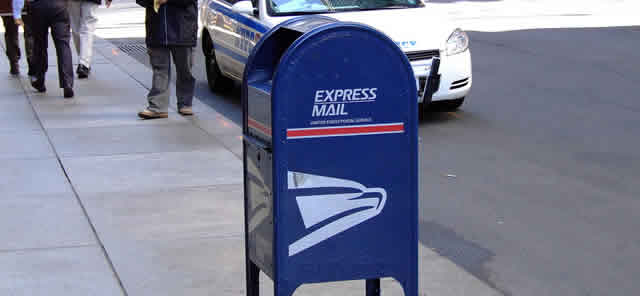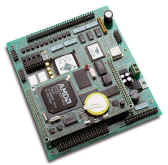
Northrop Grumman, a leading provider of technology services relevant to homeland security, has produced a Biohazard Detection System that is currently being implemented by the US Postal Service. This system inserts samples from bulk mail into a machine to test them for possible traces of anthrax spores and other biological agents. The process begins when a truckload of mail is received by a postal service facility.
The mail is quarantined until it can be subjected to the biohazard test. As the letters and packages are processed, dust particles are collected into containers that are then placed into testing machines. Each machine can hold up to ten samples. When the machine is switched on, a robotic arm picks up each container and delivers it to the DNA chamber for particle analysis, so as to eliminate the potential for human contact with the potentially harmful particles.
The analysis the particles undergo is similar to a DNA-type test as the machine attempts to match for biohazards. With each truckload of mail received by a postal distribution center going through this process of testing, it makes it possible for the USPS to detect and identify minute amounts of chemical and biological agents that may have otherwise gone unnoticed and would have ultimately harmed many.
 Various companies are involved in contributing to the technology used to make this biohazard testing product possible. One of these companies is TERN, Inc. TERN contributes to the biohazard detection machine with its MotionC-P microcontroller. Advanced Product Design and Manufacturing (APD&M), the company responsible for creating a control board used to dictate the movement of the machines’ robotic handling system, uses TERN microcontrollers in its product. The MCP is mounted onto APD&M 10in x 14in control board and is connected to an ATC that runs the application. The MCP communicates to four dedicated micro-stepping drives and has 50+ channels for input and output from sensors.
Various companies are involved in contributing to the technology used to make this biohazard testing product possible. One of these companies is TERN, Inc. TERN contributes to the biohazard detection machine with its MotionC-P microcontroller. Advanced Product Design and Manufacturing (APD&M), the company responsible for creating a control board used to dictate the movement of the machines’ robotic handling system, uses TERN microcontrollers in its product. The MCP is mounted onto APD&M 10in x 14in control board and is connected to an ATC that runs the application. The MCP communicates to four dedicated micro-stepping drives and has 50+ channels for input and output from sensors.
The engineers at APD&M had utilized TERN boards in the past and were comfortable with their capabilities and performance, which is why they came highly recommended to Lou Filo when he undertook this project. Filo believes it is “easiest to buy TERN boards and interface them for input and output.”
By acknowledging the seriousness of the chem-bio threat, the USPS in cooperation with Northrop Grumman, ADP&M, and TERN, Inc. is working to make a safer, more secure American society. Now it is possible to be alerted of biohazards before innocent people become affected by an attack. When lives and health are threatened, it is inherent that the strongest precautions be used and the the most advanced technology be employed. This is why TERN microcontrollers are used to complete this innovative and important project. With 100 biohazard detection machines deployed thus far, and an intended 1500 implemented in postal facilities throughout the country over the next year, the USPS, with the help of our MCP, is well on its way to securing its staff and the public.
Northrop Grumman Corporation is a leading provider of technology services and solutions relevant to the major Homeland Security (HLS) critical areas of detection, prevention, preparation, response, and recovery. Northrop Grumman has the capacity to adapt and integrate numerous defense technologies and systems for application in domestic HLS missions.
Chem-Bio Defense Technology
BALTIMORE, March 3, 2004
Northrop Grumman Corporation (NYSE:NOC) has established a Chem-Bio Defense Technology Center to develop next-generation technologies that will build on the success of the company’s Biohazard Detection System, which is currently being installed in U.S. Postal Service facilities nationwide.
The Center will leverage three areas of Northrop Grumman expertise-mass spectrometry, electro-optics and micro-electro-mechanical systems bioassays-used to detect and identify minute amounts of chemical or biological agents and warn against them in time to allow effective treatment of those affected by an attack. The Center, located at the company Electronic Systems sector’s Advanced Technology Laboratory near the Baltimore-Washington International Airport, is currently executing its first development contract and negotiating or competing for others with the U.S. Departments of Defense and Homeland Security.
“In establishing the Center, we acknowledge the seriousness of the chem-bio threat,” said Taylor W. Lawrence, vice president and general manager of Northrop Grumman’s Systems Development and Technology Division. “The technologies we’re refining will reduce the size and cost of sensors and detection systems as well as make them faster and more sensitive.”
United States Postal Service Awards Biodetection Contract to Northrop Grumman
BALTIMORE, May 19, 2003 (PRIMEZONE)
Following a successful development and test phase, the United States Postal Service (USPS) has awarded Northrop Grumman Corporation’s (NYSE:NOC) Security Systems LLC unit a contract to manufacture and integrate biohazard detection systems (BDS) designed to rapidly analyze and detect potential biological threats at postal service mail-sorting facilities nationwide. The contract, which extends from January 2004 to October 2004, has a value of approximately $175 million.
Northrop Grumman is the prime contractor and systems integrator of the BDS, which uses polymerase chain reaction (PCR) technology to analyze air samples taken from mail sorting equipment. The system detects trace levels of DNA from anthrax spores and other biological agents as letters and packages are processed.
Team members involved in the preproduction phases included Smiths Detection, a subsidiary of London-based Smiths Group plc, which is the bio-suite, or sub-assembly, integrator; Cepheid, Sunnyvale, Calif., which developed the PCR technology; Sceptor Industries, Kansas City, Mo., which provides the particle collection and air sampling instrumentation and technology; and MDCI, Inc., Doylestown, Pa., providing the Cartridge Handling System, allowing automatic handling of the test cartridges without the operator’s direct contact.
We work together to meet this national security issue and provide technologically advanced, cost-effective postal automation solutions to postal customers.
Proven solutions for an uncertain world
For decades, Northrop Grumman IT has been a leading provider of security solutions to national intelligence and defense clients. We’ve protected some of America’s most sensitive information assets and programs. And we’ve safeguarded communications and messaging at the very highest levels. Today, we leverage this experience to offer proven solutions for a wide range of government and business customers – and their increasingly diverse security needs.
Recent events have put a spotlight on these needs as never before. Global terrorism. Espionage and criminal activity. Natural disasters, power outages, and code threats. They threaten our people. And, they put our nation’s critical infrastructures and enterprises at risk. What’s more, government and business are increasingly dependent on networked information systems. The growing vulnerability of these systems to both cyber and physical attack underscores the need for enterprises to manage their risks and protect their critical assets.
To meet these challenges, Northrop Grumman IT has developed scalable solutions that cover the entire spectrum of homeland, enterprise, and communications security – as well as the requirements of public safety agencies. Encompassing the best commercial and government practices and tools, these solutions provide efficient, risk-managed security. And, they establish a framework for addressing future needs. So when unforeseen threats strike, you’ll be ready to respond.
TERN, Inc. understands that it is producing a component that is incorporated into a US Postal Agency machine being utilized to support national security.
This product is the MotionC-P 2540 4-axis open-loop stepping motor control with AE-40 including 128KB SRAM, ACTF_AE 128KB flash, RTC-Bat, 2 RS232, UART485 via MCP H3, no regulator, with Header Type “B”; J4, J5, J7, J11, H1, H2 and H3.


